Joint Effect of Ultrasonic Vibrations and Solid Metal Addition on the Grain Refinement of an Aluminium Alloy
Abstract
:1. Introduction
2. Experimental Methods and Materials
3. Results and Discussion
4. Conclusions
- The grain refining effect upon introduction of a same-alloy rod into the melt prior to casting has been confirmed.
- The temperature range of the same-alloy rod introduction should be close the casting temperature to assure that the generated solidification sites remain active.
- The application of ultrasonic vibrations to the same-alloy rod gives additional grain refining effect that is most probably related to the known effects of cavitation on the accelerated dissolution and mixing as well as on the fragmentation of solidification sites.
- The observed grain refining by the same-alloy rod introduction with the ultrasonic oscillations applied is similar to that achieved by the standard grain refining procedure.
- The results show a promising technology of using the same-alloy rod instead of the grain refining rod in continuous casting processes.
Author Contributions
Funding
Acknowledgments
Conflicts of Interest
References
- Danilov, V.I.; Neimark, V.E. Effects of solidification conditions on the structure of an aluminium ingot. Metallurg 1938, 10, 34–43. [Google Scholar]
- Scheil, E. Inoculation and inoculants in metal melts. Giesserei 1956, 43, 233–240. [Google Scholar]
- Madyanov, A.M. Suspension Casting; Metallurgizdat: Moscow, Russia, 1969. [Google Scholar]
- Zatulovsky, S.S. Suspension Casting; Naukova Dumka: Kiev, Russia, 1981. [Google Scholar]
- Balandin, G.F. Formation of Grain Structure in Castings; Mashinostroenie: Moscow, Russia, 1973; pp. 225–227. [Google Scholar]
- Schmidt, W. Method of Solidifying Molten Metal. U.S. Patent US3247557 (A), 26 April 1966. [Google Scholar]
- Talbot, A.M.; Soller, H.W. Method of Internal Nucleation of a Casting. U.S. Patent GB1324526 (A), 25 July 1973. [Google Scholar]
- Krupp GmbH. Foundry Mould Castings—With Solid Metal Particles Added to Molten Metal in Mould. U.S. Patent FR2201149 (A1), 26 April 1974. [Google Scholar]
- Bondarev, B.I.; Napalkov, V.I.; Tararayshkin, V.I. Modification of Aluminium Wrought Alloys; Metallurgiya: Moscow, Russia, 1979; pp. 96–98. [Google Scholar]
- Eskin, G.I. Ultrasonic Treatment of Molten Aluminium; Metallurgiya: Moscow, Russia, 1965. [Google Scholar]
- Abramov, O.V. Crystallization of Metals in Ultrasonic Field; Metallurgiya: Moscow, Russia, 1972. [Google Scholar]
- Abramov, O. High Intensity Ultrasonics. Theory and Industrial Application; Gordon and Breach: Amsterdam, The Netherlands, 1998. [Google Scholar]
- Eskin, G.I.; Eskin, D.G. Ultrasonic Treatment of Light Alloy Melts, 2nd ed.; CRC Press: Boca Raton, FL, USA, 2015. [Google Scholar]
- Brodova, I.G.; Popel, P.S.; Eskin, G.I. Liquid Metal Processing. Application to Aluminum Alloy Production; Taylor and Francis: London, UK, 2002. [Google Scholar]
- Komarov, S.; Oda, K.; Ishiwata, Y.; Dezhkunov, N. Characterization of acoustic cavitation in water and molten aluminum alloy. Ultrason. Sonochem. 2012, 20, 754–761. [Google Scholar] [CrossRef] [PubMed]
- Aluminum Association. Standard Test Procedure for Aluminum Grain Refiners, TP-1; The Aluminum Association: Washington, DC, USA, 1990. [Google Scholar]
- Wang, F.; Eskin, D.; Connolley, T.; Wang, C.; Koe, B.; King, A.; Reinhard, C.; Mi, J. In-situ synchrotron X-ray radiography observation of primary Al2Cu intermetallic growth on fragments of aluminium oxide film. Mater. Lett. 2018, 213, 303–305. [Google Scholar] [CrossRef]
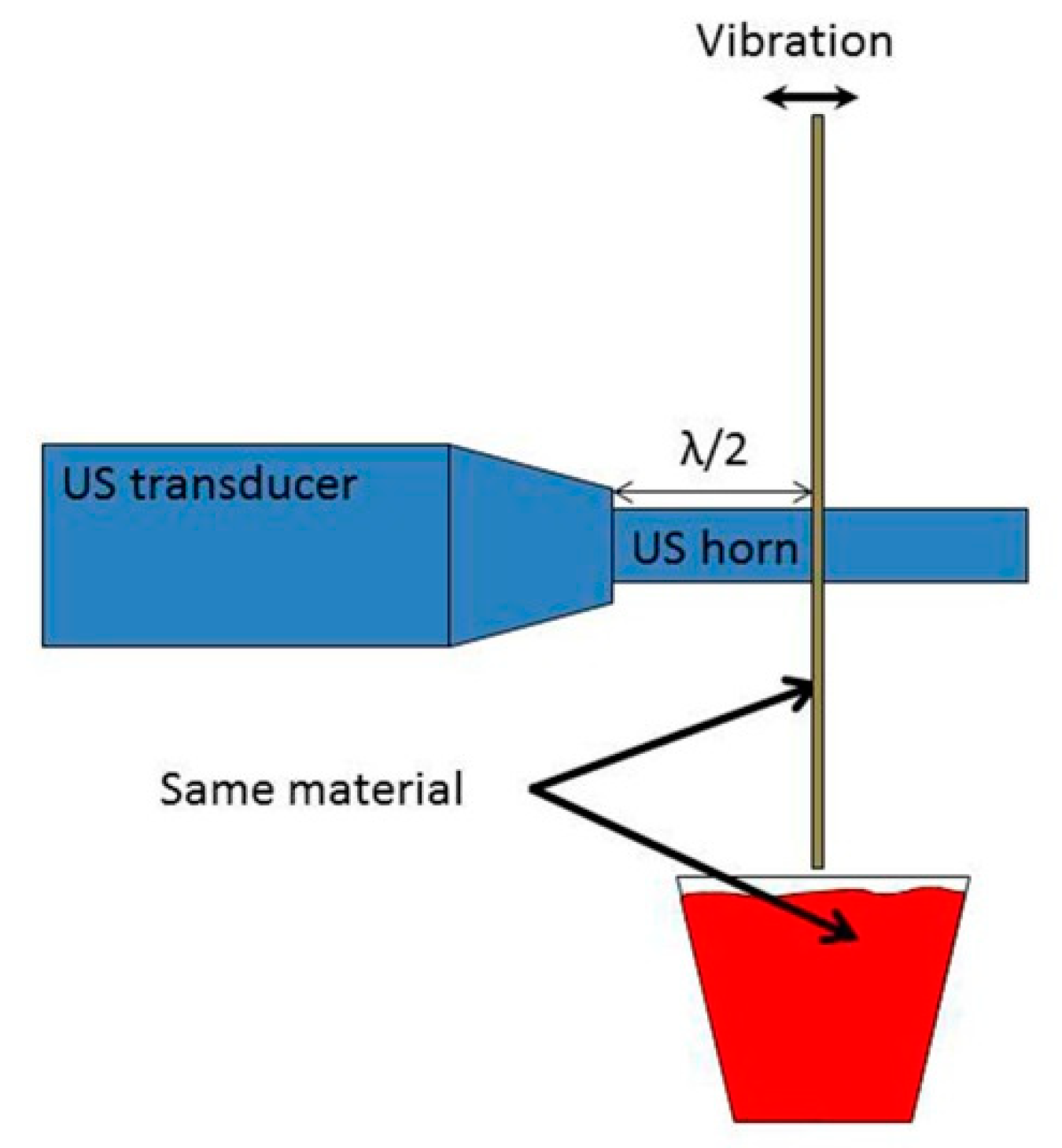
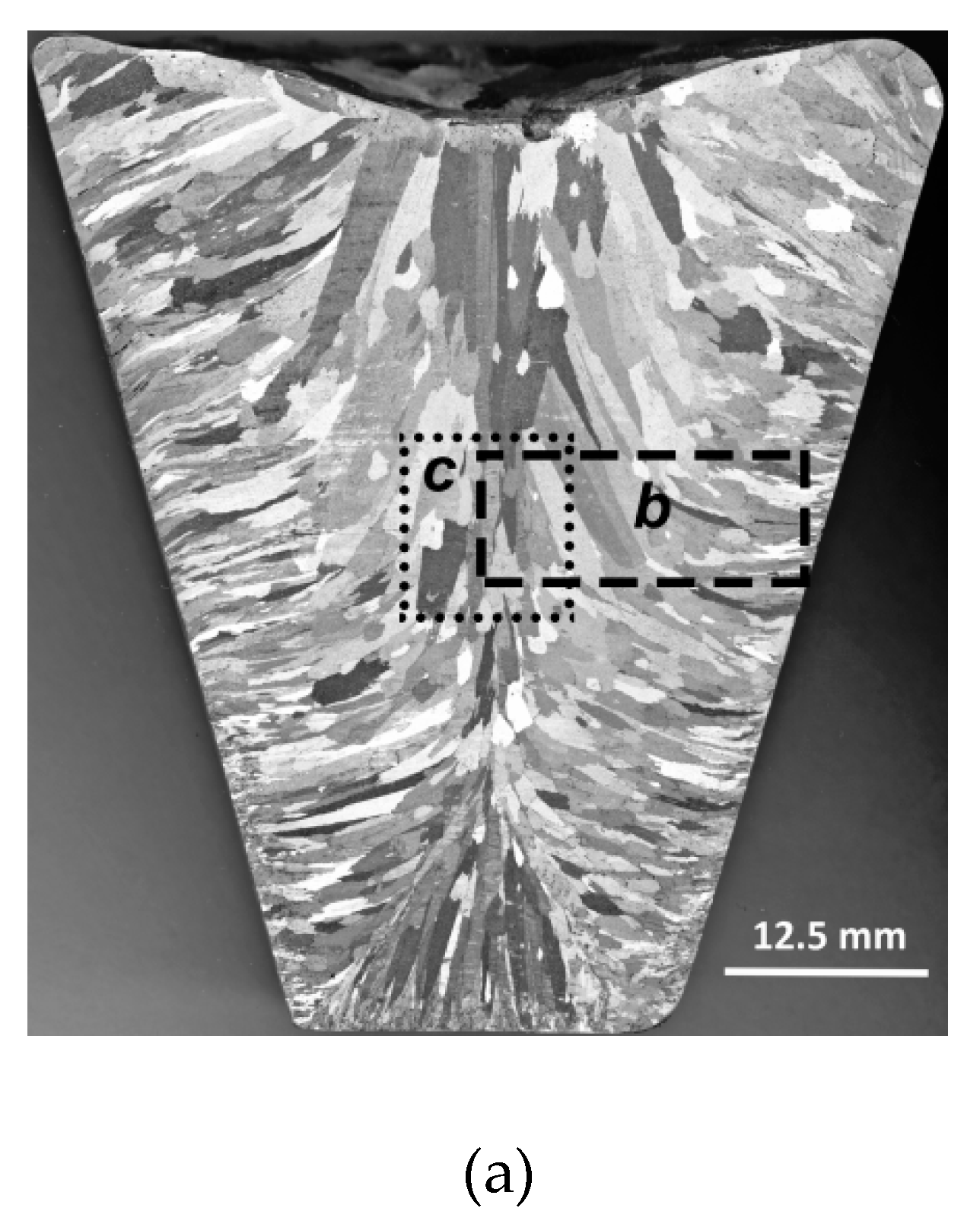
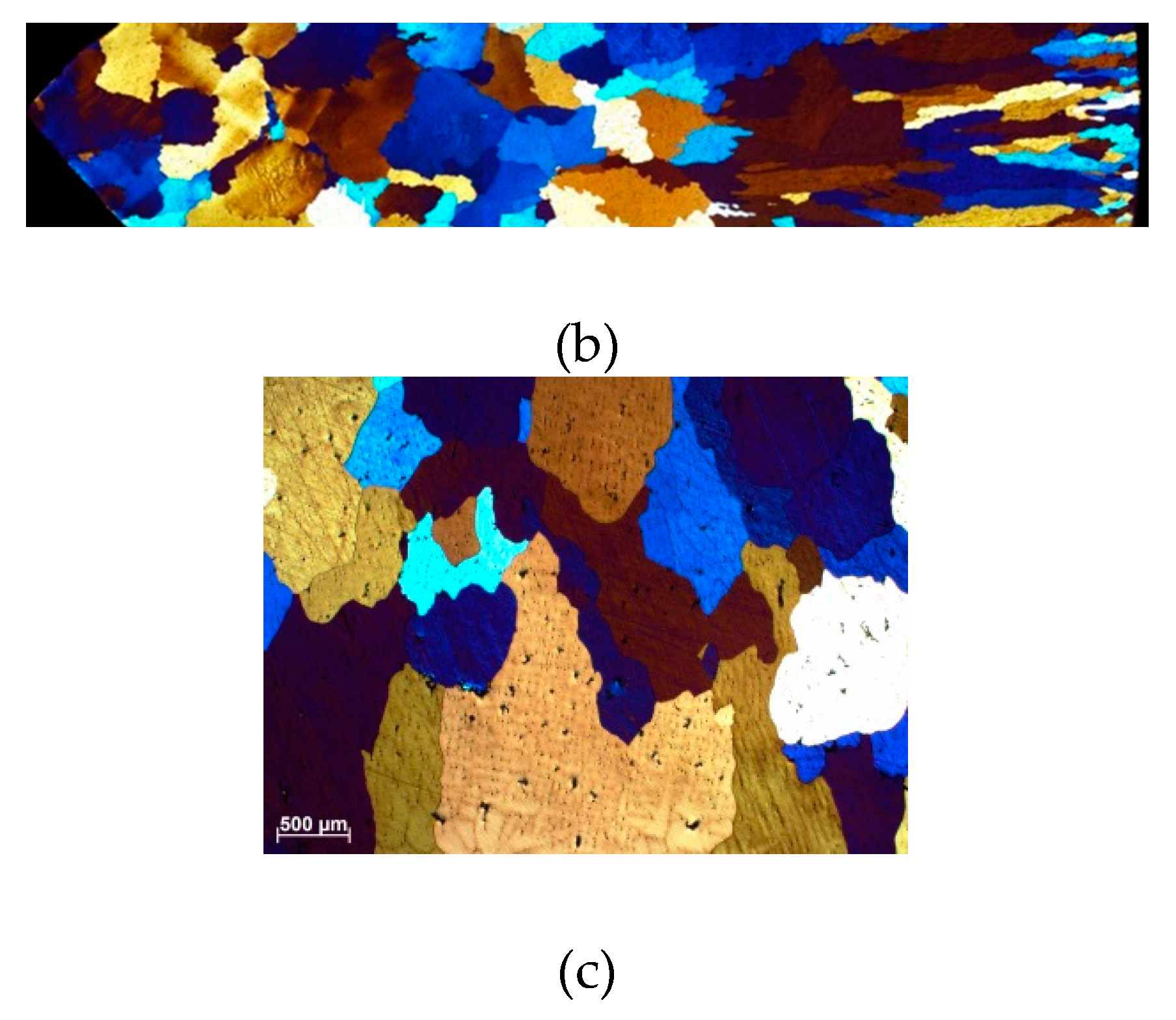
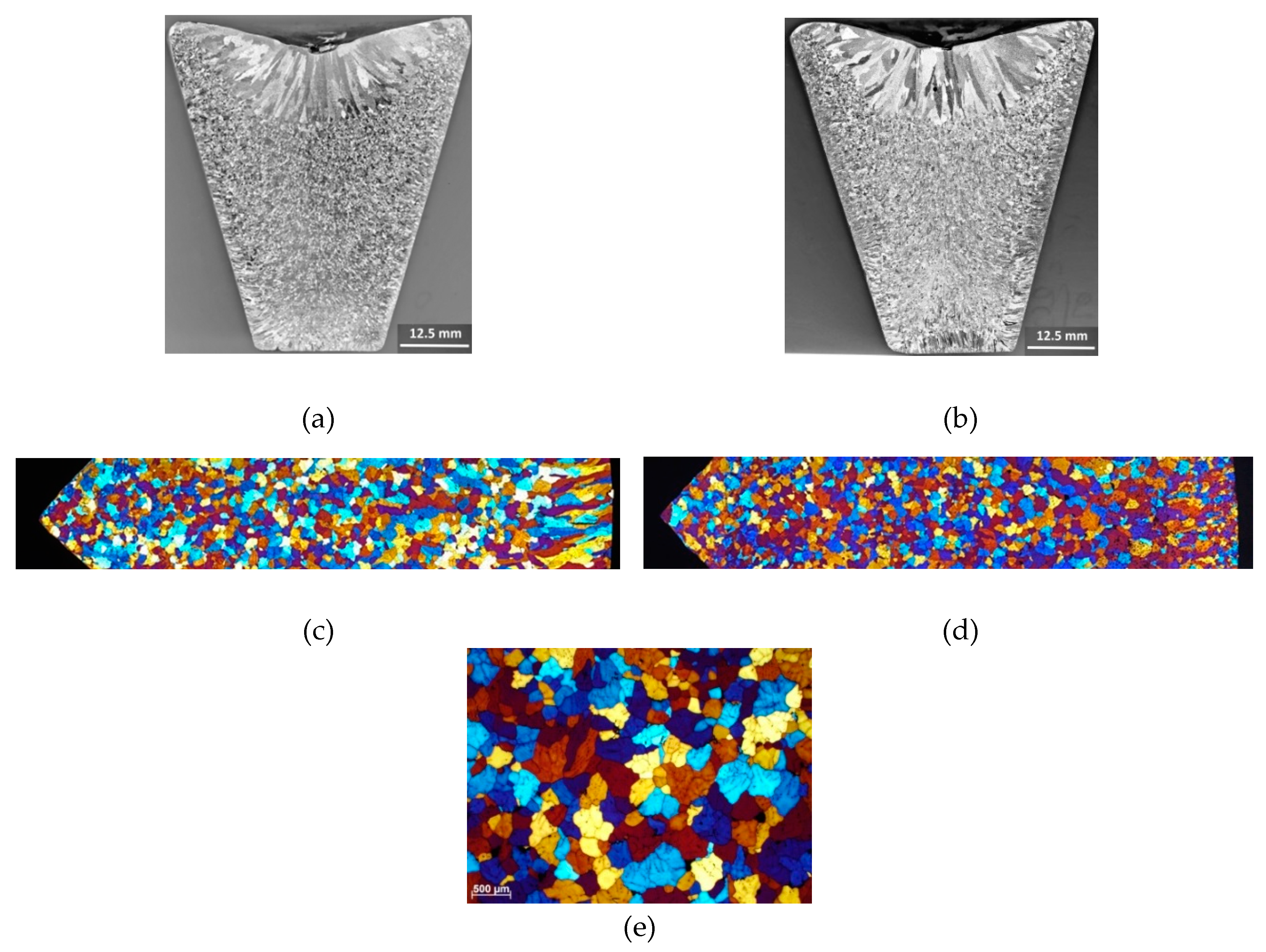
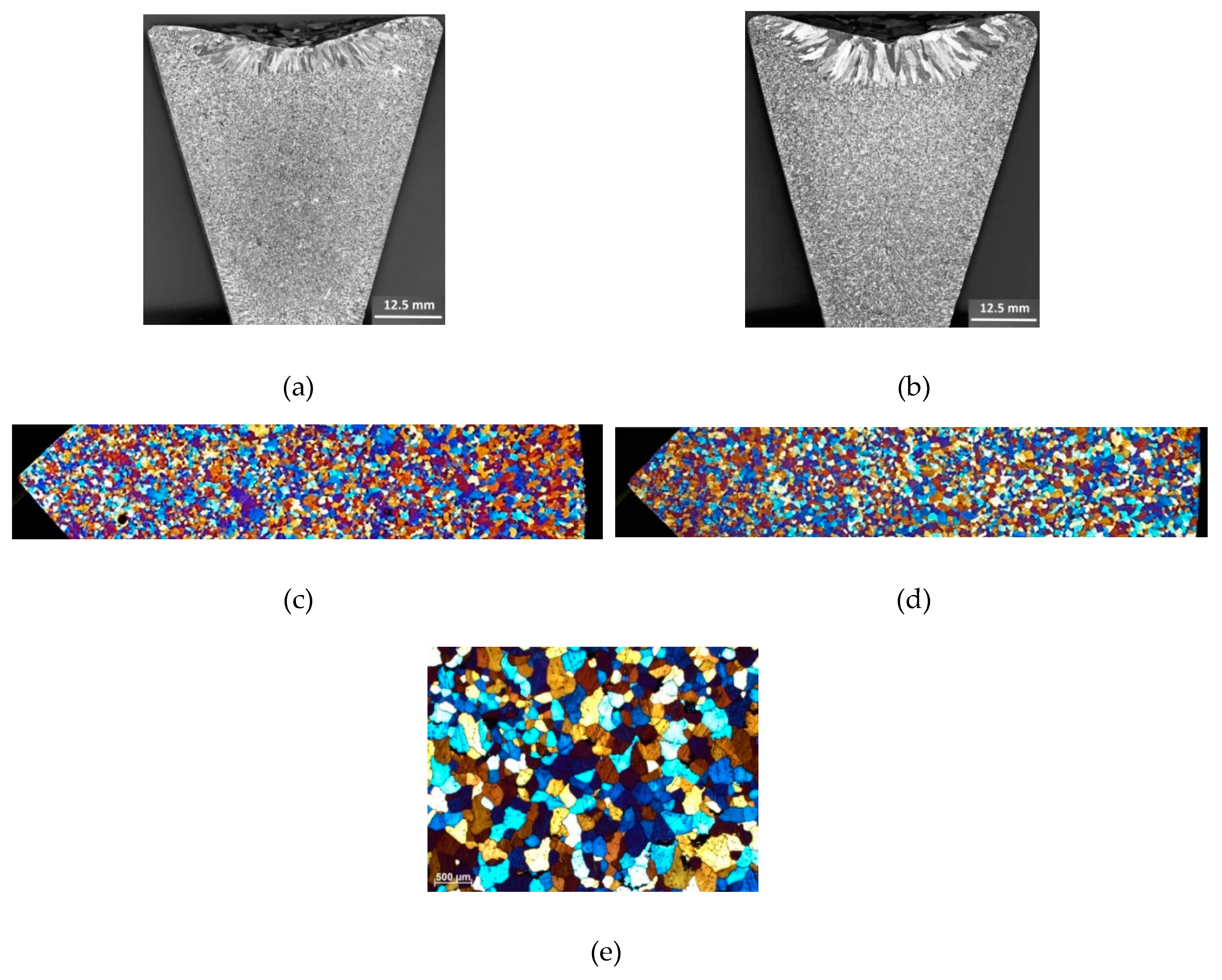
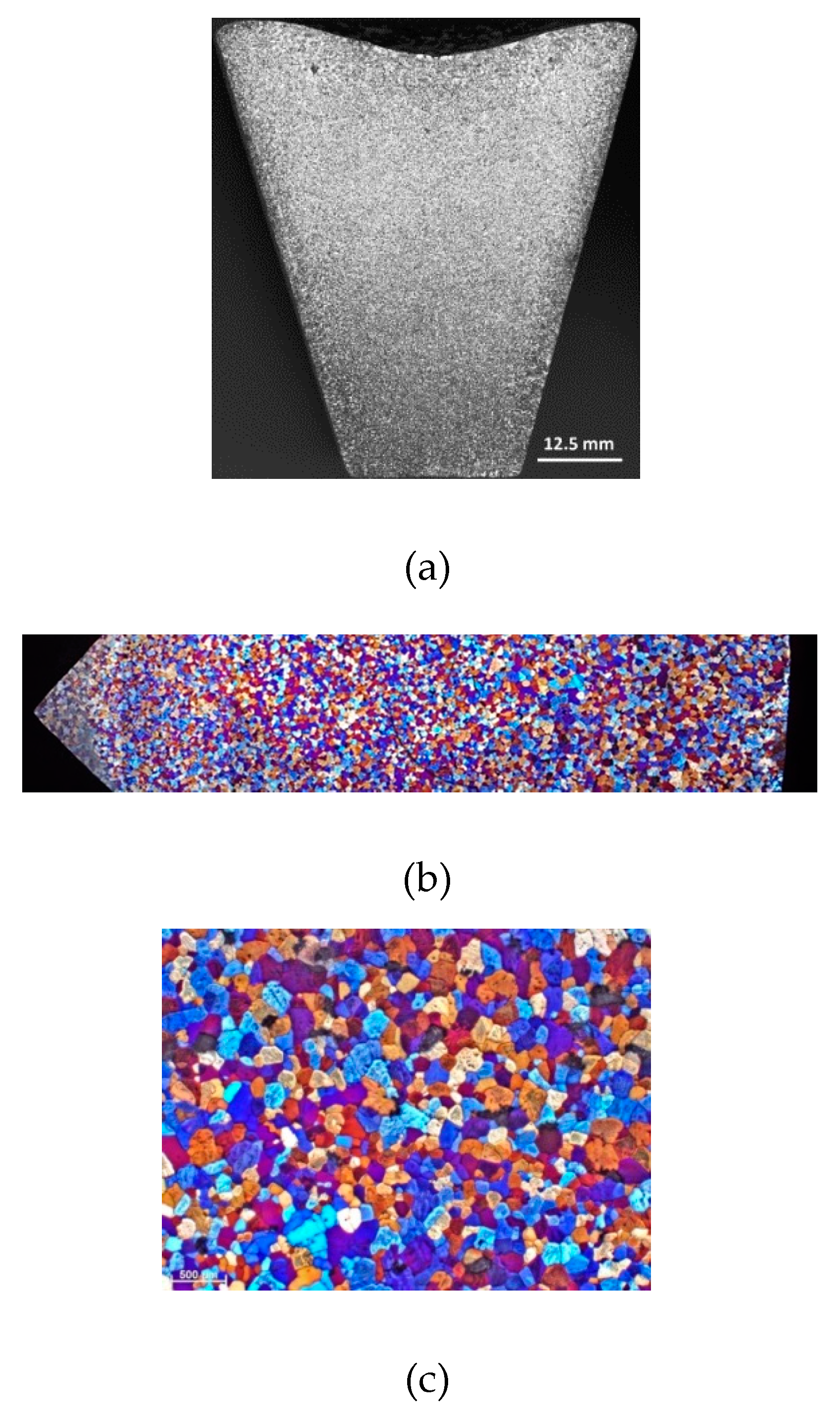
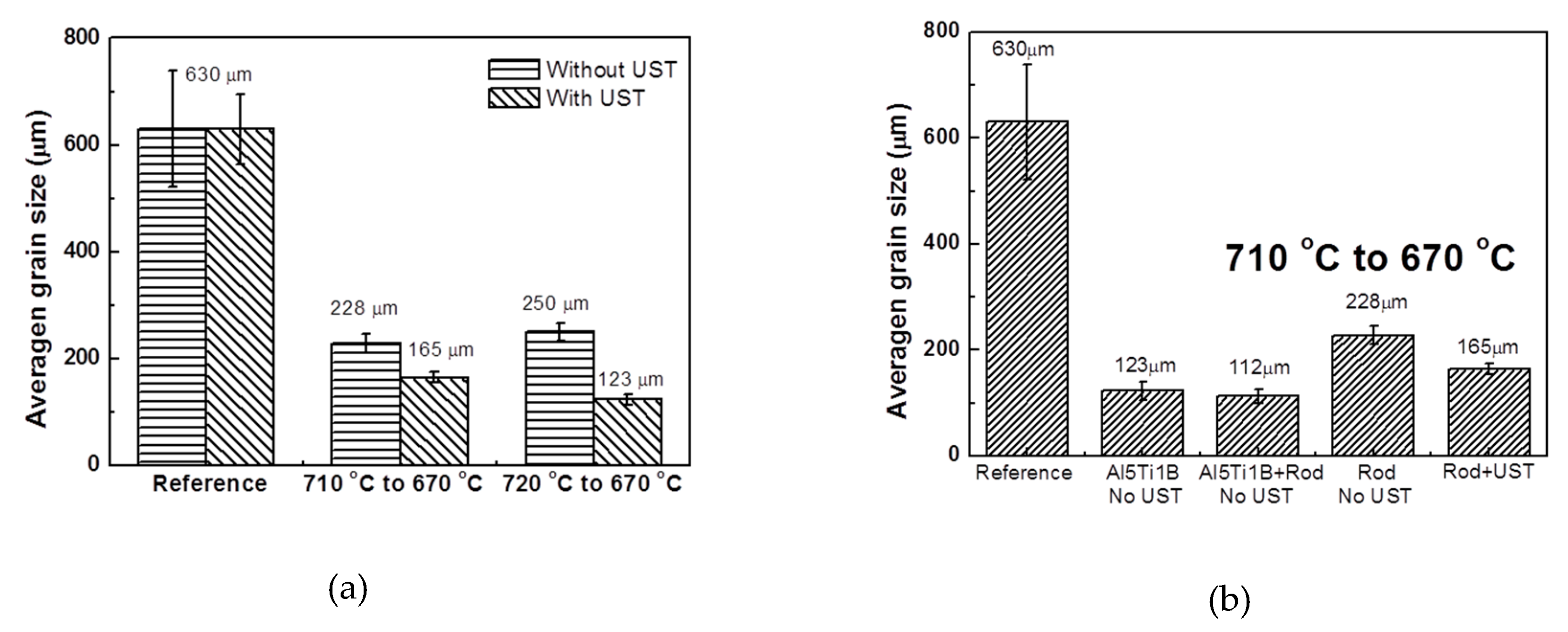
© 2019 by the authors. Licensee MDPI, Basel, Switzerland. This article is an open access article distributed under the terms and conditions of the Creative Commons Attribution (CC BY) license (http://creativecommons.org/licenses/by/4.0/).
Share and Cite
Eskin, D.; Wang, F. Joint Effect of Ultrasonic Vibrations and Solid Metal Addition on the Grain Refinement of an Aluminium Alloy. Metals 2019, 9, 161. https://doi.org/10.3390/met9020161
Eskin D, Wang F. Joint Effect of Ultrasonic Vibrations and Solid Metal Addition on the Grain Refinement of an Aluminium Alloy. Metals. 2019; 9(2):161. https://doi.org/10.3390/met9020161
Chicago/Turabian StyleEskin, Dmitry, and Feng Wang. 2019. "Joint Effect of Ultrasonic Vibrations and Solid Metal Addition on the Grain Refinement of an Aluminium Alloy" Metals 9, no. 2: 161. https://doi.org/10.3390/met9020161
APA StyleEskin, D., & Wang, F. (2019). Joint Effect of Ultrasonic Vibrations and Solid Metal Addition on the Grain Refinement of an Aluminium Alloy. Metals, 9(2), 161. https://doi.org/10.3390/met9020161



